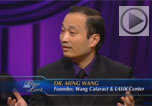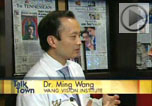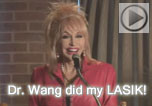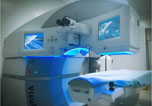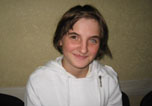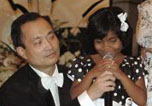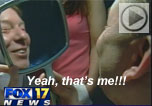- Over 55,000 LASIK and cataract procedures (including on over 4,000 doctors)
- The FIRST center in TN to offer Laser Cataract Surgery
- Introduced bladeless all-laser LASIK to the state
- Implanted the state's first FOREVER YOUNG™ Lens
- The first surgeons in the US to perform a new Intacs surgery to treat keratoconus
- Helped patients from 40 states and 55 countries
- International referral center for cataract surgery and LASIK complications
- Read Dr. Wang's book: LASIK Vision Correction
Why did you decide to have LASIK? Why did you choose Dr. Wang? How has your life changed since your LASIK procedure?
What is your advice for people considering LASIK?
Click to read more
|
Chapter Nine LASIK Statistics There are many ways to present patient outcomes after refractive surgery, and the difference in numbers can be confusing. Some doctors may talk about the percentage of patients who achieve 20/20 vision after the first treatment, while others may present data on the number of patients who achieve 20/40 vision. Still others may discuss their results based on patients who have had enhancement procedures (if necessary). What are the important numbers and how can you interpret these outcomes? First of all, to drive legally without glasses you need to have 20/40 vision. This is an important number; however, it is also important to know your chance of achieving 20/20 vision or your best potential vision without glasses. Additionally, it is important to know the likelihood that you will need an enhancement (retreatment) procedure. These numbers depend on your initial prescription and are also somewhat surgeon dependent. Patients with higher degrees of nearsightedness or farsightedness have a higher likelihood of needing an enhancement procedure. The statistics provided below are based on a study including 820 eyes treated by Ernest W. Kornmehl, MD, and provide a good guideline for what you can expect. Keep in mind that the patients in the statistics below who do not achieve 20/20 vision without glasses are usually quite happy. They can do most things, including drive a car, without any correction. And when it is absolutely necessary for them to fine tune their vision, they can use a thin pair of glasses to do so. Myopia Mild Myopia Mild myopia is defined as less than three diopters (-3.00). The chance that a patient with mild myopia will need an enhancement procedure is approximately two percent. The chance of achieving vision without glasses is ninety-four percent after an enhancement procedure (if necessary). The chance of achieving 20/40 or better and being able to drive without glasses is nearly one hundred percent. Moderate Myopia Moderate myopia is defined as a refractive error between -3.00 and -6.00 diopters. There is a six percent chance of needing an enhancement procedure if you fall into this category. Based on the data, eighty-two percent of patients achieve 20/20 vision or better, and ninety-nine percent achieve 20/40 or better. Severe Myopia Severe myopia is defined as a refractive error between -6.00 and -9.00 diopters. These patients have approximately a nine percent chance of needing an enhancement procedure, after which they have a ninety-nine percent chance of seeing 20/40 or better and a sixty-nine percent chance of seeing 20/20 or better without glasses. Extreme Myopia Extreme myopia is defined as refractive error higher than -9.00. The enhancement rate for this group of patients varies from twelve to fifteen percent. Patients in this group need to discuss their procedure with their doctor. Many patients do extremely well; however, other variables such as the thickness and the steepness of the cornea come into play. Patients in this group need to carefully discuss the risks and benefits of the LASIK procedure, as well as other options, with their doctor. Although enhancement rates are higher in this group of patients, there may be limitations on what can be done because of other variables of the eye, such corneal thickness. Hyperopia A multicenter trial done for FDA approval for the VISX STAR2 laser for the treatment of hyperopia in the range of +1.00 to +6.00 provides us with a good general benchmark. In this study, ninety-one percent of the patients saw 20/40 or better, and fifty-three percent saw 20/20 after the procedure. Patients being treated for hyperopia should be aware that their healing time is slightly longer than for those patients with myopia, and the chance that they will need an enhancement is slightly higher. Again, these numbers are variable, depending on the patient's original prescription and the surgeon. Summary From the data presented above, you can see that while refractive surgery is an exciting new procedure, it is not for everyone. It should not be thought of as a guarantee to eliminate one's need for glasses. Rather, it should be thought of as a way to dramatically reduce one's dependency on glasses and contact lenses. |
If you're interested in bladelessLASIK, choose experience and technology. Choose Wang Vision 3D Cataract and LASIK Center of Nashville, Tennessee. Call (615)321-8881 or email us today.
Our new texbooks
A 501c(3) charity that has helped patients from over 40 states in the US and 55 countries, with all sight restoration surgeries performed free-of-charge.



